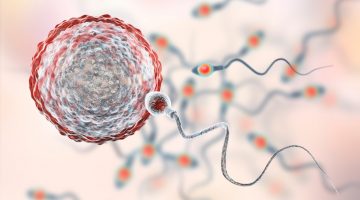Male Reproductive System

The male reproductive system sits both inside and outside of the body and includes the testes and scrotum, ducts, glands, and the penis. Together, these organs work to produce sperm (the male gamete) along with other components of semen and deposit the sperm inside the female’s vagina.
Male Reproductive System Anatomy:
Testes:
The testes, also known as testicles, are a pair of glandular oval-shaped organs found inside the scrotum whose primary function is the production of sperm. The testes are connected to the body by a spermatic cord and cremaster muscle. This muscle contracts and relaxes along with the scrotum to control the temperature of the testes as sperm must be maintained at a temperature slightly lower than body temperature. Each teste is subdivided into smaller compartments or lobules. Each lobule contains a section of seminiferous tubule lined with epithelial cells. The epithelial cells contain the stem cells that divide and form sperm cells through spermatogenesis.
In addition to producing sperm, the testes are also part of the endocrine system and are responsible for the production of the male sex hormone, testosterone.
Duct System:
The epididymis and vas deferens are two major components of the male reproductive duct system. The epididymis is the site of sperm storage and maturation. The vas deferens transports semen (the fluid containing sperm) from the epididymis to the penis.
Glands:
The seminal vesicles and prostate gland are two other very important parts of the male reproductive system. Seminal vesicles produce nutrients that are added to semen during ejaculation so that the sperm have the necessary fuel for their journey inside the female reproductive tract. The prostate gland secretes an alkaline (basic) fluid that makes up part of the semen enhancing sperm motility and ability to deal with the acidic environment of the female reproductive tract.
The endocrine system refers to the collection of glands that secrete hormones (the body’s long-distance communication device) into the blood to be carried to a distant target organ(s). The endocrine system is a remarkably complex system that a minute fraction of can be the entire focus of a Ph.D. To help simplify things, we are only going to focus on what’s necessary here.
Male Reproductive Endocrine System
Hypothalamus:
Actually a part of the brain, the hypothalamus is the grandmaster of the endocrine system. Covered with chemoreceptors (brain receptors that detect chemical and hormone levels in the bloodstream), the hypothalamus detects real-time levels of the body’s hormone levels and then relays necessary “instructions,” to the pituitary gland as necessary to proper bodily function. Importantly, the hypothalamus releases Gonadotropin (GnRH) which coordinates the release of follicle-stimulating hormone (FSH) and luteinizing hormone (LH) from the pituitary gland.
Pituitary Gland:
Receiving instruction from the hypothalamus, the pituitary gland can either increase, decrease, or continue production of FSH and LH – which plays a vital role in the production of sperm.
Testes:
The testicles produce testosterone, the primary male sex hormone. Testosterone is crucial to the development of the male reproductive system as well as the production of sperm.




